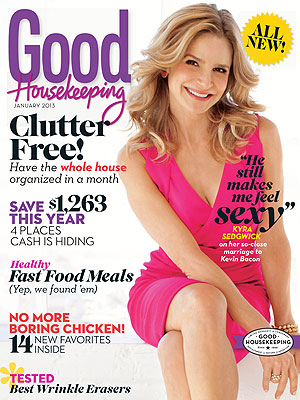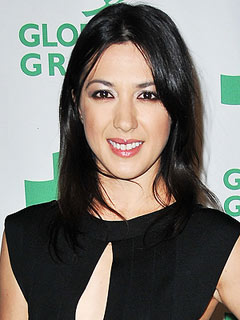Barnes and Noble Nook-HD+
Click here to view this gallery.
[More from Mashable: 7 Stylish iPad Cases With Notepads]
The other night I handed the new Barnes and Noble HD+ to my son to see his reaction to one of the latest 9-inch tablets. He held it, played with the screen and said, “Which one is this?” I told him and he answered, “I can’t tell the difference anymore.” It’s true, with the sudden explosion of 7-, near-8-, 9- and 10-inch-plus tablets, it’s getting a little hard to tell which one is which — especially when many larger tablets look like their tinier siblings.
Barnes and Noble’s large-format (9-inch) HD-screen entry, the HD+, is a quite similar to the 7-inch Nook HD. However, with its somewhat sharper corners and far-reduced black-screen border, it’s also more similar in appearance to larger tablets such as the Amazon Kindle Fire HD 8.9. What sets the Nook apart visually is the trademark nook hole in the lower left-hand corner. It appears to serve no visible purpose, though you could hold the roughly 18-ounce tablet by that corner without too much stress on your hand. It is one of the lightest tablets on the market, although it’s thicker than the Google Nexus 10, Kindle Fire 8.9 and fourth-generation Apple iPad.
[More from Mashable: The 7 Best Tablets for Kids]
Nook HD+’s other distinctive feature is the physical “N” home button on the face of the device. It’s an attribute the Nook HD+ (and 7-inch Nook HD) share with the iPad. As I’ve said before, having that obvious “take me home” button on the front of the device is something I wish every tablet manufacturer would replicate.
Interface
Speaking of replicate, much of what is important and what you need to know about Barnes and Noble’s biggest tablet can be found in my review of the 7-inch Nook HD. The interfaces are exactly the same, so I won’t waste too much space recounting every bit of the Nook HD+ interface, which obscures any trace of Android 4.0, and is exquisitely usable.
The biggest difference between the Nook HD and the HD+ is screen resolution. The HD gets you 1440×900 pixels, while the HD+ offers 1920×1280, which is slightly more than the Kindle Fire HD 8.9’s 1920×1200. The latter two devices are almost the exact same size. By contrast, the competitors’ 7-inch devices are quite different because Amazon includes a front-facing camera, while Barnes and Noble does not include cameras on any of its tablets (if you plan on taking photos or video with your tablet, you can stop reading now). In the case of the Nook HD+, Barnes and Noble uses the space it saves on a camera for, it appears, 80 extra pixels of space. For the record, neither device beats the iPad’s 2048×1536 resolution.
Connectvity
Barnes and Noble also chose to leave out a cellular option from all of its tablets. Amazon, on the other hand, adds it in for the Kindle Fire HD 8.9 LTE. This is not as big of a deal as it seems since the world is filled with high-speed Wi-Fi. Still, if you plan to surf the web on your tablet while sitting on a train without another device to which to tether your HD+, look for products with the mobile broadband option, instead.
When it comes to connectivity, Amazon adds dual-band Wi-Fi to its HD Kindle Fires, while Barnes and Noble’s tablet remains single band. I’ve tested both devices in the most stressful situation -– streaming HD video -– and the difference is negligible.
Using It
Barnes and Noble Nook HD+’s profile-centric interface remains one of the best on the market. There is no learning curve; you simply drag your profile image to the unlock icon, and you have access to the large and uncluttered interface that features a carousel (which like the Kindle is a hodge-podge of disparate icons), your library and some recently used apps. Persistent menu items include the Library, Apps, Web, email and Shop. The screen also includes “your Nook Today,” which, along with the weather, is a place for Barnes and Noble to push shopping options based on your interests.
As you would expect, reading books and magazines is a pleasurable experience, especially on this larger screen. Magazines such as Esquire look great and, yes, Barnes and Noble still employs the animated page turn (though I don’t know for how much longer). Email and Web browsing are solid, and I prefer Barnes and Noble’s web solution to Amazon’s home-grown Silk browser, which crashed too often for my taste.
Social integration is fairly good on the Nook HD+. When I installed the Twitter client, it became one of my options for social sharing. That said, the app looks like it would be more at home on a small-screen smartphone than on the HD+’s 9-inch display. For Facebook, I opted for the web interface, which looks too tiny in portrait mode, but just right in landscape.
Movies and Music
I had no trouble buying, renting and streaming HD-quality movies such Arthur Christmas, and Netflix worked smoothly. Barnes and Noble, however, lacks its own streaming option. If you pay $ 75 a year for Amazon Prime, you get access to a vast library of streaming content. Both devices will let you play HD content on your big-screen TV, though they do it in slightly different ways.
Amazon’s Kindle Fire HD 8.9 comes complete with a mini-HDI-out port, and can accommodate a mini-to-standard HDMI cable (not included), so I could watch the HD content on my big-screen TV. The Nook HD+ lacks an HDMI port, but you can buy a $ 39 adapter (with an HDMI cable), which plugs into the tablet’s 30-pin port, to do the same thing.
I still prefer the Kindle HD platform for music since Amazon’s music services are more deeply integrated into the device and its cloud-based storage offering. On the Nook HD+ you have to start by finding the music service under Apps. If Barnes and Noble is serious about music, it should be on the main menu. Worse yet, if you open the Music app, it offers no instruction on how to fill your music library. You have to add tunes via your computer, by connecting to your PC with the proprietary cable or through the Micro SD slot where you can add more storage or place, say, an entire library of songs.
If you have a Rhapsody Account, you can use it to manage your music needs on the Nook HD+.
I almost never use my large tablet for music (that’s a job for my iPhone or iPod), so I don’t miss the rich music capabilities as much as some others likely would.
Apps and Performance
Like Amazon, Barnes and Noble curates its app library, which generally makes it safe and usable. The key apps, such as Netflix, Twitter, Dropbox, MobiSystems’ OfficeSuite, FlipBoard and Evernote, are all there.
I found some games on there, too, such as the Angry Birds Series and Cut the Rope. On the other hand, Barnes and Noble has very few action games. This may be because, while it’s running the same Texas Instruments Dual core 4470 CPU as the Kindle Fire HD 8.9, it doesn’t offer the same quadcore graphics processing power as Apple’s fourth-generation iPad.
Amazon actually includes the GPU-hungry Asphalt 7 in its app library, but the game does not look particularly good on the Kindle Fire HD 8.9. Obviously, Barnes and Noble chose not to take that risk.
Price
At $ 269 for the 16 GB model (I tested the $ 299 32 GB option), Barnes and Noble’s Nook HD+ is one of the most affordable large-screen tablets on the market — that price even includes the AC adapter. Amazon’s Kindle Fire HD 8.9 costs $ 299, but does not include the charger, and adds subsidizing sleep-screen ads. A 16 GB Wi-Fi-only fourth-generation iPad starts at $ 499.
Obviously, the iPad is more powerful, has a higher resolution and two cameras, while the Kindle, which also includes a camera, offers powerful Dolby stereo speakers (Nook HD+ has ones with decent volume) and unlimited cloud-based storage for your Amazon content. But if those features don’t matter to you, and you’re looking for an attractive, large-screen, light-weight, fun, effective and very affordable tablet from a company that knows a thing or two about good content, you can’t do better than the Nook HD+.
This story originally published on Mashable here.
Tech News Headlines – Yahoo! News











